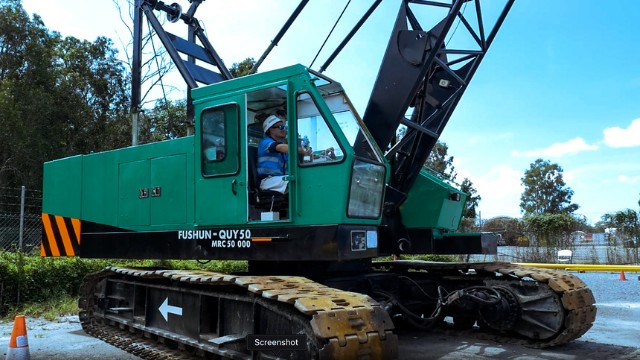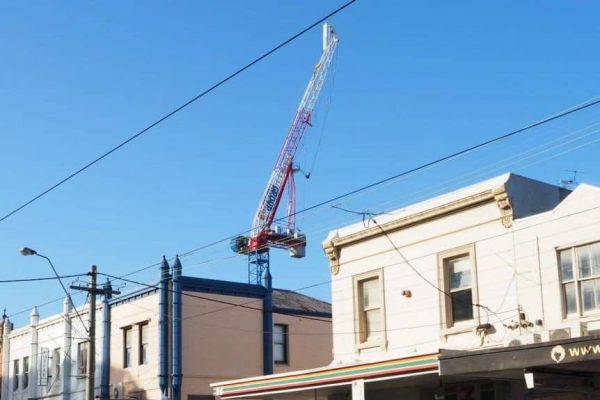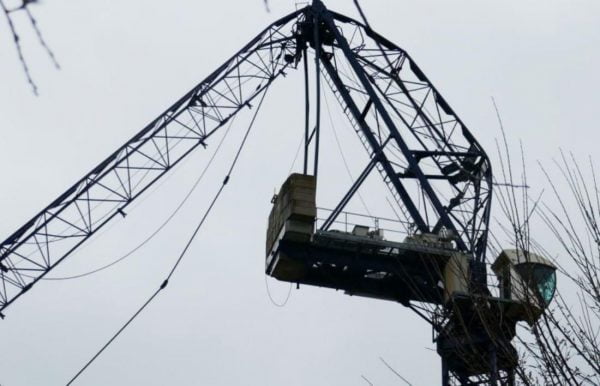CRANE TRAINING | 4 Minute Read
Written by Jake Rudge
Join our mailing list for 10% off your next course Subscribe
4 Things to Consider when Operating a Crawler Crane
Our operating a crawler crane considerations in a nutshell:
- Allow adequate slew clearances from hazards
- Don’t rely on any hoist/luff limits
- Operate mobile cranes in a controlled manner as per the crane manufacturer’s specifications
- Control risks when mobiling ie. Swinging load/hook, in motion forces, mobiling within specification
Mobile crane licences encompass a wide variety of cranes, new and old
In Australia, being the holder of a C6 Slewing Mobile Crane licence allows you to operate a ‘slew’ (ah hem) of crane types up to 60T, including operating a crawler crane and all-terrain cranes. There’s no requirement to say that you must get hands on with all types of equipment that a licence encompasses in the training yard. In fact, in the modern era of short form courses (rather than the traditional apprenticeships) you are only required to train and be assessed on just one crane. It’s a common practice in the high risk work licence training industry ‘On the Job Training’ are trying their best to curb.
So is operating a 50T lattice boom crawler crane just like a 60T all-terrain? As I’m sure you can imagine, they are very different beasts. In this blog we’ll explore 4 things to consider when operating a crawler crane.
1. Allow adequate slew clearances from hazards
The footprint of a crawler will potentially be larger in comparison to an all-terrain slew crane, so it is something to consider when looking at your area of operation, to take adequate clearance into account.
The other main difference to be thinking about when operating a crawler crane, is unlike an all-terrain crane which is setup on outriggers (therefore working from a firm and level surface), the crawler is completely susceptible to whatever the ground surface is you’re sitting on. If there is a slope of even 3°, the crawler is going to be running on that 3° lean. So when you stop slewing, the crane will keep going, trying to “fall off the slope to the low point”.
2. Don’t rely on any hoist/luff limits
As per the code of practice (below is snippet item number 6.1 of ‘Mobile Crane Code of Practice 2006’), limits are there to assist operators and not be relied upon. So never run full speed into limits relying on them to stop you when required. Ultimately it’s the operators responsibility to maintain control of the crane at all times.
6.1 Reliability of devices
Limiting and indicating devices are intended as an aid to crane operators. The devices should not be relied upon to replace the use of the crane’s load chart and operating instructions under any circumstances. Sole reliance on these devices in place of good operating practices may cause an incident.
Where limiting and indicating devices are to be installed on a mobile crane, the safety circuits of these devices should generally meet either:
(a) a reliability level of Category 4 under AS 4024: Safety of machinery
or
(b) a safety integrity level (SIL) of 3 under AS 61508: Functional safety of electrical/electronic/programmable electronic safety-related systems.
These categories of reliability level and SIL are related to the concept of ‘fail-safe’.
3. Operate mobile cranes in a controlled manner as per the crane manufacturer’s specifications
It’s common knowledge as licenced operators, that you should never exceed the crane manufacturer’s specification. It’s not worth the risk from a safety perspective and could potentially make you liable for criminal and civil prosecution. Cranes are designed with specifications for a reason, not as a general guide or recommendation and are there to ensure safety for all on site in high risk industries while in operation.
4. Control risks when mobiling ie. Swinging load/hook, in motion forces, mobiling within specification
When mobiling a crawler, you’re once again completely susceptible to ground conditions. In motion you generate potentially hazardous dynamic forces, so understanding the manufacturer’s specifications prior to making a move is critical.
Before moving a crawler crane, ask yourself the questions:
- Can you do it with a load on?
- Does your slew pin or other motion locks need to be engaged?
- What height should you have your block? Too low and too much swing is generated, too high and the block will wildly crash around into the jib tip
Crawler jibs are much larger than their all-terrain counterparts, therefore have a much larger surface area to catch wind. Factors such as slew speeds may be affected in windy conditions (n.b the crane may have a lower wind rating than a similar all-terrain).
Also, as they generally run a reeved rope luffing system as opposed to a hydraulic ram one, if you’re at a high jib angle facing into high wind, the jib may be held up while luffing down by the wind. This could potentially allow the luff rope to go slack and bird cage at the drum. Then when the gust of wind drops, the boom can come crashing down, shock load the rigging, or even worse the jib can be blown back creating structural damage.
The images below are of tower cranes but you get the picture, this is exactly what can happen with a crawler crane:
Many transferrable skills and knowledge apply – but operate with caution
Undoubtedly, there are transferable skills you apply from one type of machine to another. Much of the differences are based on operating with common sense and being familiar with the specification and capability of the machine that you are operating. But never underestimate the operational impact of what may appear to be a minor lean of the surface you’re grounded on. Or indeed the potential hazards caused by having a larger footprint or the wind with a bigger jib size.
At On the Job Training we’ve got up to 8 cranes on site (including a 50T crawler), that we try our best to give experience of operating all cranes when training with us – not just the one stipulated by Workplace Health & Safety Queensland (and offered by most HRWL training companies). We want you to leave us with experience to tackle any situation you may face in your next role.
If you’re looking to do your next high risk work licence then give us a call on 07 3807 6061, drop us an enquiry below or talk to us now on live chat.
Read about the benefits of the more comprehensive training experience we offer here at On the Job Training.
Introducing the ‘C6 Elite’ Mobile Crane Course
The Queensland Government only requires you to train on one of the many types of cranes you’re allowed to operate holding a Slewing Mobile Crane C6 Licence. For us, this inadequately prepares you as being ‘job ready’. We offer the ability to operate as many of 6 of these mobile cranes – check out our video with what some of students and trainers had to say about this industry leading course.
Meet King Duffy Our in house Franna Expert
The C6 slewing mobile crane licence also encompasses CN class non-slewing cranes. If you train exclusively on a 25t truck mount slew crane, are you ready to jump in the seat of a 14T franna non-slew crane? Our director Matt discusses the intricacies of a franna with King Duffy, our in house franna expert.
Contact Us
Contact us any time using the details below. Alternatively, leave us a message using the enquiry form we will get back to you the following business day at the latest.
Phone: 07 3807 6061
Email: admin@onthejobtraining.edu.au
Address: 79 Christensen Road, Stapylton QLD 4207
Usual Business Hours: Mon - Fri 6.30AM - 5:00PM




Recent Comments